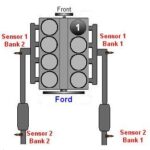Obdii Scanner Reset Tools have become indispensable for car owners and mechanics alike. These devices provide a quick and cost-effective way to diagnose and resolve car problems by reading and clearing engine fault codes. This article explores the importance of OBDII scanners, their functionality, and how they empower you to take control of your vehicle’s maintenance.
Modern vehicles rely on complex computer systems to manage engine performance and other critical functions. When an issue arises, the system generates a diagnostic trouble code (DTC), commonly known as a fault code, and stores it in the vehicle’s onboard computer. An OBDII scanner reset tool allows you to access these codes, providing valuable insights into the root cause of the problem. Without an OBDII scanner, diagnosing car troubles can be a time-consuming and expensive process, often requiring a trip to a mechanic.
OBDII scanners vary in features and price, ranging from basic code readers to advanced diagnostic tools. However, they all share the core functionality of retrieving and clearing fault codes. While most basic scanners can read and clear generic powertrain codes, more sophisticated models can access manufacturer-specific codes and provide live data streams for real-time monitoring of various vehicle parameters.
Understanding OBDII and How it Works
OBDII stands for On-Board Diagnostics, version II, a standardized system used in most vehicles manufactured after 1996. The system utilizes a standardized 16-pin connector, typically located under the dashboard on the driver’s side. This connector, often referred to as the OBDII port, allows the scanner to communicate with the vehicle’s computer.
The OBDII system continuously monitors various sensors and components throughout the vehicle. When a malfunction is detected, a corresponding DTC is stored in the computer’s memory. An OBDII scanner can then retrieve these codes, allowing you to identify the specific problem area. Besides reading codes, many OBDII scanners also offer the functionality to clear the codes after the issue has been addressed. However, keep in mind that simply clearing codes without fixing the underlying problem will likely result in the codes reappearing.
Choosing the Right OBDII Scanner Reset Tool
Selecting the appropriate OBDII scanner depends on your needs and budget. A basic code reader is sufficient for most car owners who want to quickly check and clear engine codes. However, professional mechanics and advanced DIYers may benefit from a more advanced scan tool with features like live data streaming, ABS and SRS system diagnostics, and bi-directional control. Consider factors such as compatibility with your vehicle’s make and model, ease of use, and the specific functionalities you require when choosing an OBDII scanner.
Investing in a quality OBDII scanner reset tool can save you significant time and money on car repairs. By providing accurate diagnostic information, these tools empower you to troubleshoot problems effectively, perform basic maintenance tasks, and avoid unnecessary trips to the mechanic. Whether you’re a seasoned mechanic or a car enthusiast, an OBDII scanner is an essential tool for anyone who wants to keep their vehicle running smoothly.

